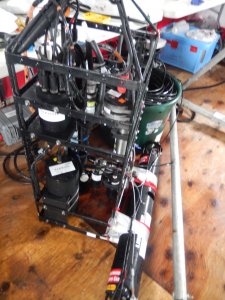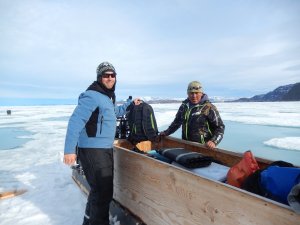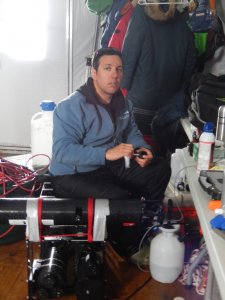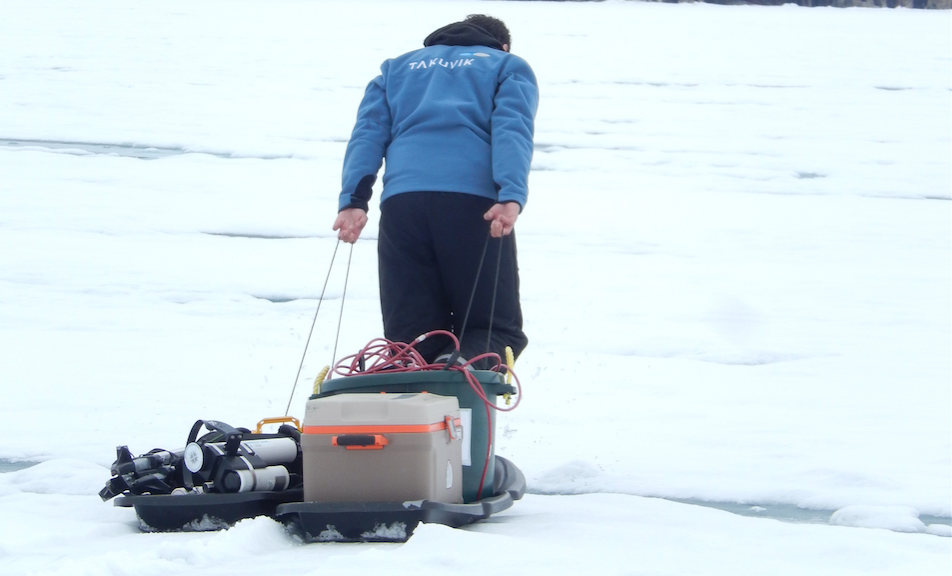Whether in solid or liquid or gaseous form, matter can convert radiative energy by the absorption process or it can transmit it with the possibility of a change in direction through the scattering process. When added up, these optical properties can tell you a lot about what a medium is made of.

Oceanographers routinely measure these properties in the ocean. They use instruments shining their own light. The signal is sort of coded, so it won’t be confused with the ambient sunlight. Thus, they have the advantage of being independent of the light geometry. Concretely this means that unlike the C-OPS, one can measure optical properties under the shadow of the ice camp, or even in great depths where the sun never shines. This also means that, if you would sample an amount of water and bring it in laboratory to run the same optical measurements, you would obtain the same result. But bringing water from all depths is not very practical. Instead, the instruments are lowered into the water column and characterize its optical properties at a very high rate.

Generally, a myriad of optically active elements form the measured signal. Groups having certain recognizable behaviours can be identified. Among these groups, we find phytoplankton. Its relative contribution and the evolution it undergoes throughout the season is thoroughly studied. To obtain precise and reliable measurements, the investigator must endeavour to achieve a clean calibration of certain instruments after each cast. This step is a tedious task since the optical instruments are very sensitive. The slightest particle left to be seen by instrument will translate into a significant change in the recorded signal. This is meticulous work and requires patience and tenacity, but is rewarding since a time series of this nature will grant access to unprecedented quantification of Arctic marine mechanisms.



